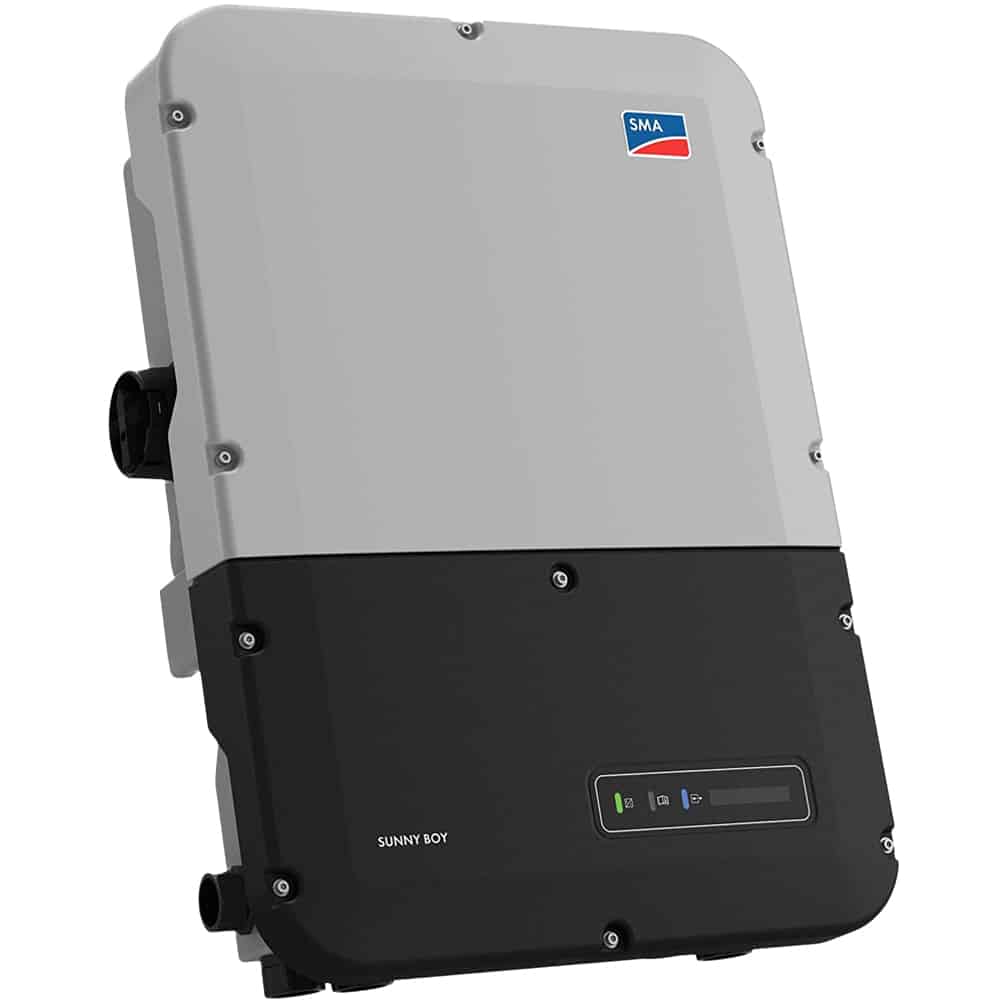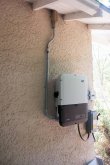FresnoFlats
New Member
- Joined
- Aug 20, 2020
- Messages
- 15
Greetings from very, very smokey California. Fresno is quite a ways from any of the present fires, but we are in the huge San Joaquin Valley and the smoke that drifts here from the fires can't escape over the mountains. Good news is that the smoke lowered our daily high to only 96 degrees. We had been hitting 108 and 109 a few days ago. But on to my story.
We bought a house 3 years ago with a 15 year old system of 20 Kyocera 130 watt panels and a Xantrex STXR2500 grid tied inverter. A couple months ago, the inverter went, "Bang!" and has not worked since. I can't get anybody to show any interest in replacing the inverter for me, so I am trying to figure out how I can do it. I have no previous experience with solar, so I am reading up. I am comfortable with electricity and wiring. I am about 3/4 through rewiring the whole house. It is old and still had a fair bit of knob and tube wiring, with a lot of weird and poorly done "upgrades". I am replacing a lot, upgrading a bunch and adding circuits.
When the system first went down I looked at our electric bill and saw that the system had been under performing for some time. I figured the whole system was feeble, but later I started testing the modules and they seem to be performing close to specifications. The panels are presently wired in 5 parallel banks of 4 panels in series. Mid day the open circuit voltage of each bank was right at 76 Volts. Today I removed one panel, cleaned it up and got 20 V, open circuit, which is very close to what it was supposed to be when new.
The first couple of people I asked about replacing the inverter, discouraged me and thought that I would not be able to find an inverter to work with such old panels. But, from my reading it seems that I should just wire enough panels in series to match the voltage range of the new inverter. Some inverters are designed for higher watts than my panels and I wonder if wiring banks in parallel is an option? It would be nice to find an inverter that didn't require rewiring, but so far I am not seeing anything.
When our old system went out we started looking into getting a larger system that would match our total electrical use. We are looking at an 8 to 10KW system, but the house roof is too broken up to hold that many panels, so the old system can remain. We will probably build a shade structure big enough to hold the new system. Need all the shade we can get around here!
Until I stumbled on this group a few days ago, I was pretty discouraged about finding any useful information. It has been very interesting reading some of the topics already. Thank you!
Paul
We bought a house 3 years ago with a 15 year old system of 20 Kyocera 130 watt panels and a Xantrex STXR2500 grid tied inverter. A couple months ago, the inverter went, "Bang!" and has not worked since. I can't get anybody to show any interest in replacing the inverter for me, so I am trying to figure out how I can do it. I have no previous experience with solar, so I am reading up. I am comfortable with electricity and wiring. I am about 3/4 through rewiring the whole house. It is old and still had a fair bit of knob and tube wiring, with a lot of weird and poorly done "upgrades". I am replacing a lot, upgrading a bunch and adding circuits.
When the system first went down I looked at our electric bill and saw that the system had been under performing for some time. I figured the whole system was feeble, but later I started testing the modules and they seem to be performing close to specifications. The panels are presently wired in 5 parallel banks of 4 panels in series. Mid day the open circuit voltage of each bank was right at 76 Volts. Today I removed one panel, cleaned it up and got 20 V, open circuit, which is very close to what it was supposed to be when new.
The first couple of people I asked about replacing the inverter, discouraged me and thought that I would not be able to find an inverter to work with such old panels. But, from my reading it seems that I should just wire enough panels in series to match the voltage range of the new inverter. Some inverters are designed for higher watts than my panels and I wonder if wiring banks in parallel is an option? It would be nice to find an inverter that didn't require rewiring, but so far I am not seeing anything.
When our old system went out we started looking into getting a larger system that would match our total electrical use. We are looking at an 8 to 10KW system, but the house roof is too broken up to hold that many panels, so the old system can remain. We will probably build a shade structure big enough to hold the new system. Need all the shade we can get around here!
Until I stumbled on this group a few days ago, I was pretty discouraged about finding any useful information. It has been very interesting reading some of the topics already. Thank you!
Paul





